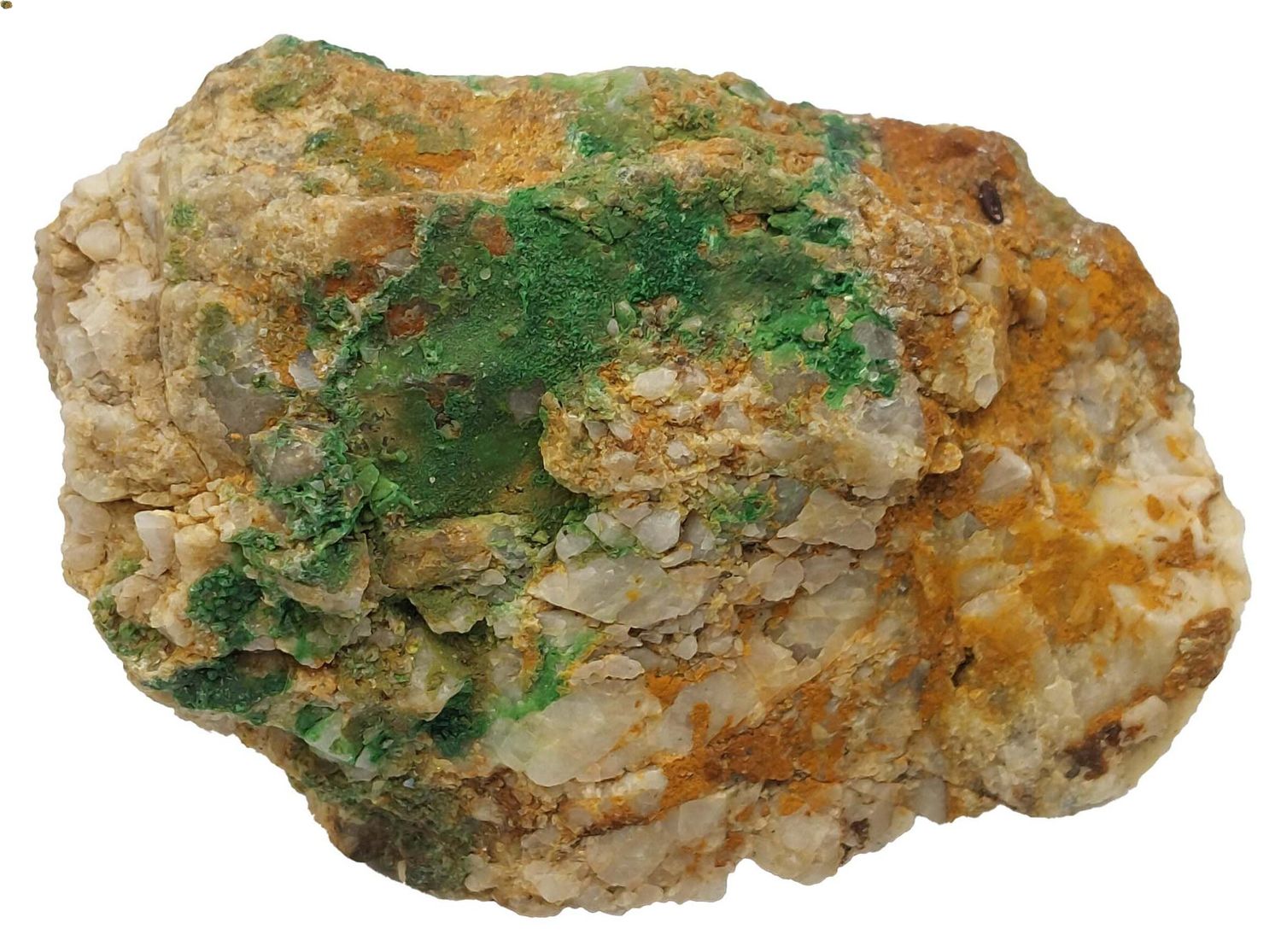
Bayldonite is a rare and captivating mineral that often intrigues collectors and geologists alike. Named after Dr. John Bayldon, this mineral is a lead-copper arsenate hydroxide, known for its striking green hues. What makes Bayldonite special? Its unique crystal formations and vibrant colors make it a sought-after specimen. Found primarily in locations like the United Kingdom, Namibia, and the United States, Bayldonite often occurs in oxidized zones of lead-copper deposits. Why should you care about Bayldonite? Whether you're a seasoned collector or just curious about minerals, Bayldonite offers a glimpse into the fascinating world of geology. Its rarity and beauty make it a gem worth knowing. Ready to dive deeper into the wonders of Bayldonite? Let's get started!
Key Takeaways:
- Bayldonite, a rare green mineral, forms in lead-copper deposits and has a unique history. It's prized by collectors and used in research to understand earth's processes.
- Found in specific locations worldwide, Bayldonite's vibrant green color and fluorescence make it a sought-after addition to mineral collections and a valuable tool for geologists.
What is Bayldonite?
Bayldonite is a rare mineral that fascinates geologists and collectors alike. Known for its vibrant green color, this mineral has a unique story and composition. Let's dive into some intriguing facts about Bayldonite.
-
Bayldonite is a secondary mineral that forms in the oxidation zones of lead-copper deposits.
-
Named after Dr. John Bayldon, an English physician and mineralogist, who first identified it in 1865.
-
Its chemical formula is PbCu3(AsO4)2(OH)2, indicating it contains lead, copper, arsenate, and hydroxide.
-
Bayldonite typically appears in shades of green, ranging from bright apple green to darker hues.
-
It often forms botryoidal (grape-like) clusters or crusts, making it visually appealing to collectors.
-
The mineral has a Mohs hardness of 3.5 to 4, which means it is relatively soft and can be scratched by harder substances.
-
Bayldonite is usually found in association with other minerals like mimetite, cerussite, and malachite.
-
It is a rare mineral, primarily found in specific locations such as Tsumeb, Namibia, and Cornwall, England.
-
Bayldonite can fluoresce under UV light, showing a bright green glow.
-
The mineral is often used in research to understand the geochemical processes in lead-copper deposits.
Where is Bayldonite Found?
Bayldonite's rarity makes it a prized find for mineral enthusiasts. Its unique formation conditions mean it is only found in certain parts of the world.
-
Tsumeb Mine in Namibia is one of the most famous localities for Bayldonite.
-
Cornwall, England, where it was first discovered, remains a significant source.
-
Other notable locations include the United States, specifically in Arizona and New Mexico.
-
Bayldonite has also been found in Australia, particularly in the Broken Hill region.
-
In Mexico, the Santa Eulalia District is known for producing Bayldonite specimens.
-
Morocco's Bou Azzer District is another source of this mineral.
-
The Lavrion District in Greece has also yielded Bayldonite samples.
-
In Germany, the Black Forest region is known for its Bayldonite deposits.
-
The Cap Garonne Mine in France is another European locality.
-
Bayldonite has even been found in China, specifically in the Yunnan Province.
How is Bayldonite Formed?
Understanding the formation of Bayldonite helps geologists trace the history of the earth's crust and the processes that shape it.
-
Bayldonite forms in the oxidation zones of lead-copper deposits, where chemical reactions occur between minerals and oxygen.
-
It is a secondary mineral, meaning it forms from the alteration of primary minerals.
-
The presence of arsenic is crucial for Bayldonite formation, as it combines with lead and copper.
-
Hydrothermal fluids play a significant role, transporting the necessary elements to the site of formation.
-
Bayldonite often forms alongside other secondary minerals, indicating a complex geochemical environment.
-
The mineral can form at relatively low temperatures, typically below 200°C.
-
Water is essential in the formation process, as it facilitates the chemical reactions needed to create Bayldonite.
-
The mineral's formation can take thousands to millions of years, depending on the environmental conditions.
-
Bayldonite's formation is influenced by the pH levels of the surrounding environment, with slightly acidic conditions being ideal.
-
The presence of carbonate rocks can also impact the formation of Bayldonite, as they provide a source of lead.
Uses and Significance of Bayldonite
Bayldonite may not be widely known, but it holds significant value in various fields, from research to collection.
-
Collectors prize Bayldonite for its beauty and rarity, making it a sought-after addition to mineral collections.
-
Geologists study Bayldonite to understand the processes that lead to the formation of secondary minerals.
-
The mineral's unique properties make it useful in research on lead and copper deposits.
-
Bayldonite can be used as an indicator mineral, helping geologists locate other valuable minerals.
-
Its fluorescence under UV light makes it a fascinating subject for mineralogists and hobbyists.
-
Bayldonite's vibrant color makes it a popular choice for educational displays in museums.
-
The mineral's formation process provides insights into the geochemical cycles of arsenic, lead, and copper.
-
Bayldonite is sometimes used in jewelry, although its softness limits its practicality.
-
The study of Bayldonite contributes to environmental science, particularly in understanding the mobility of heavy metals in the environment.
-
Bayldonite's rarity and beauty make it a symbol of the intricate and often hidden processes that shape our planet.
The Fascinating World of Bayldonite
Bayldonite, a rare and captivating mineral, holds a special place in the hearts of collectors and geologists. Its vibrant green hues and unique crystal formations make it a standout specimen. Found primarily in the oxidation zones of lead-copper deposits, this mineral is a testament to the Earth's geological wonders.
Whether you're a seasoned collector or just starting, adding a piece of bayldonite to your collection can be a thrilling experience. Its rarity and beauty make it a prized possession. Plus, learning about its formation and properties can deepen your appreciation for the natural world.
So, next time you come across this stunning mineral, take a moment to marvel at its beauty and the incredible processes that created it. Bayldonite is more than just a mineral; it's a glimpse into the Earth's fascinating history.
Frequently Asked Questions
Was this page helpful?
Our commitment to delivering trustworthy and engaging content is at the heart of what we do. Each fact on our site is contributed by real users like you, bringing a wealth of diverse insights and information. To ensure the highest standards of accuracy and reliability, our dedicated editors meticulously review each submission. This process guarantees that the facts we share are not only fascinating but also credible. Trust in our commitment to quality and authenticity as you explore and learn with us.


